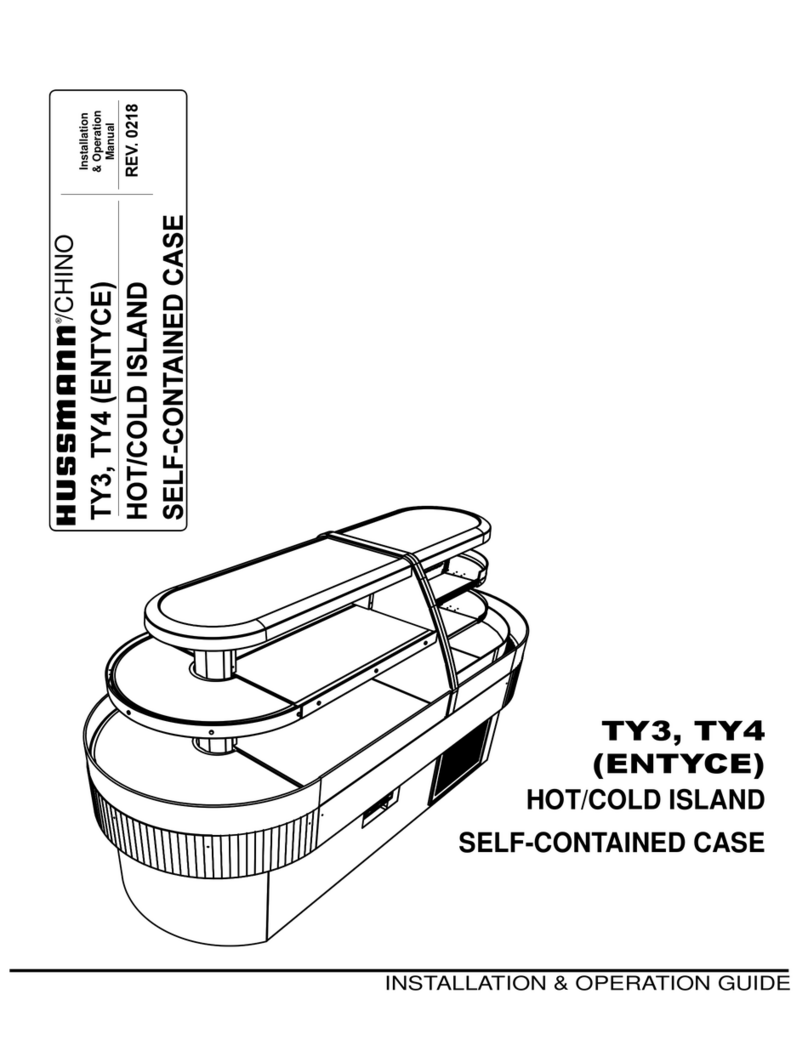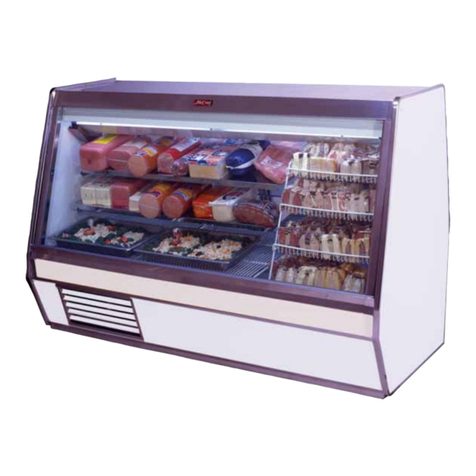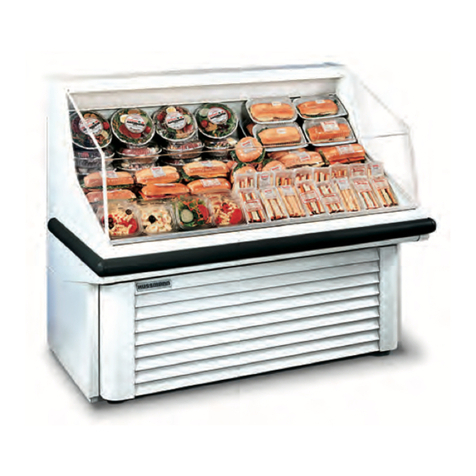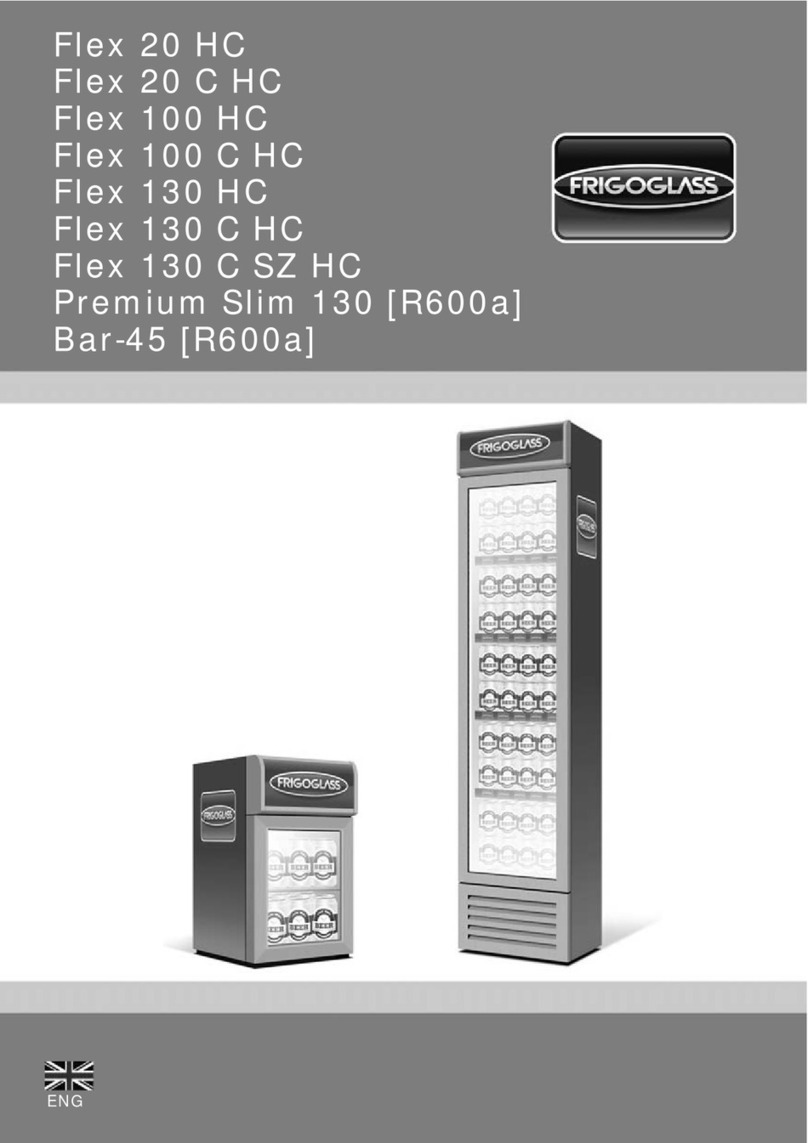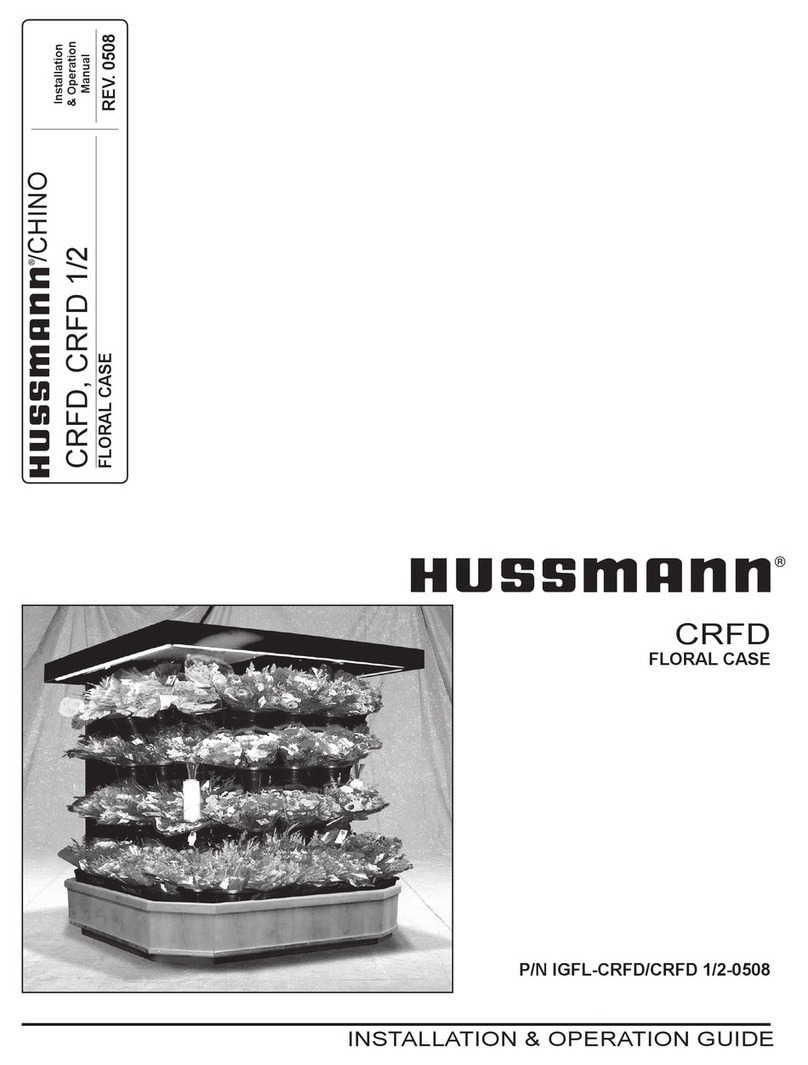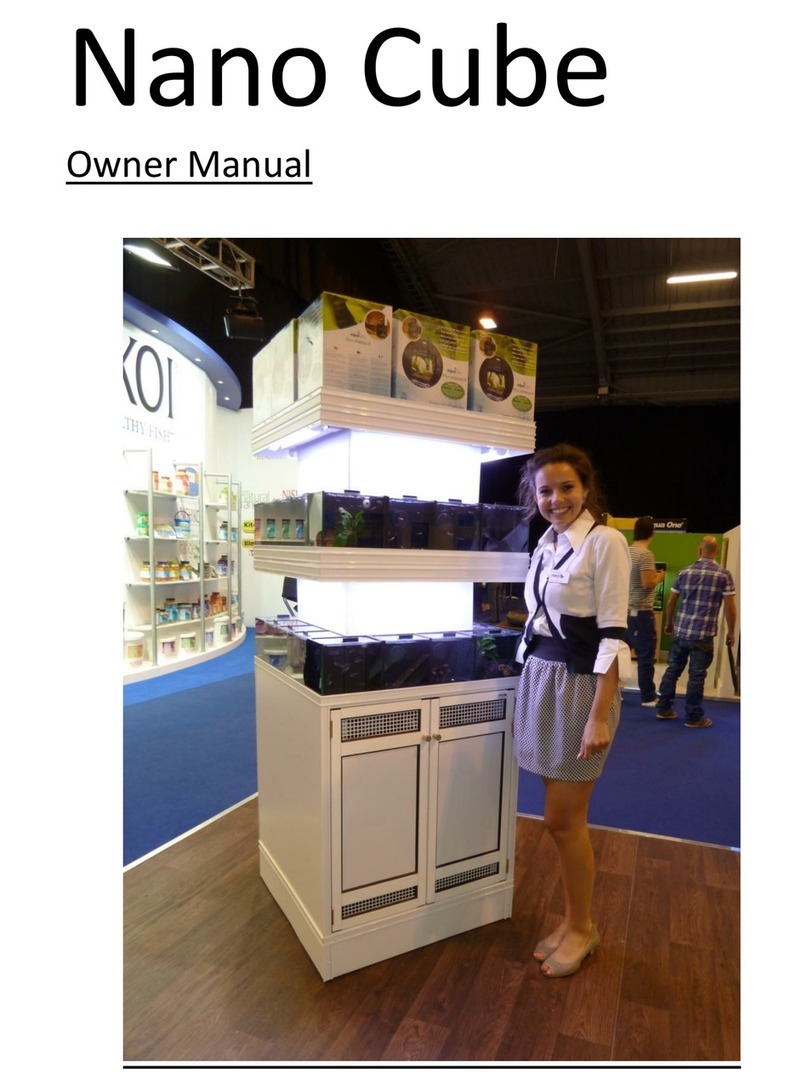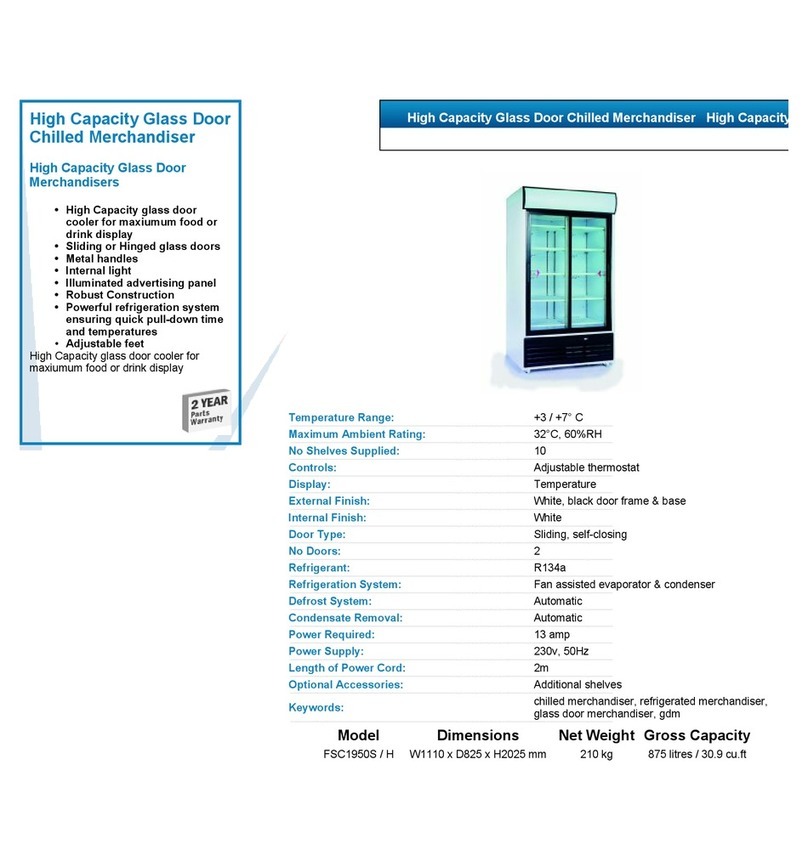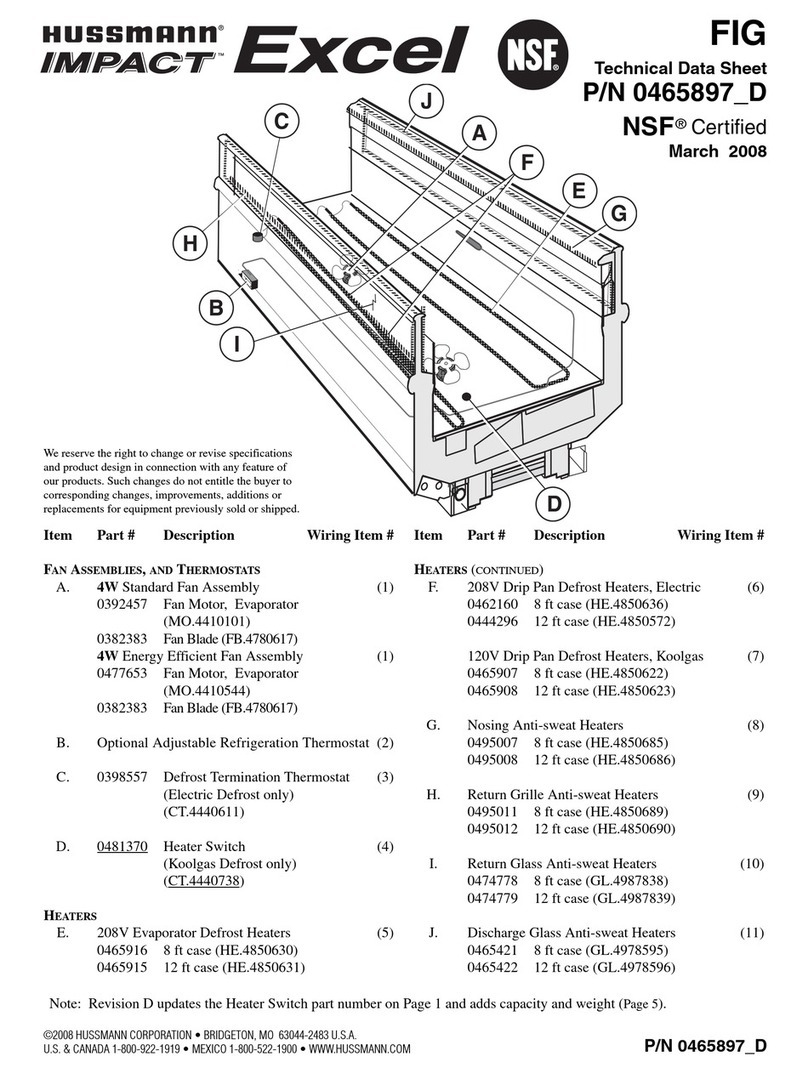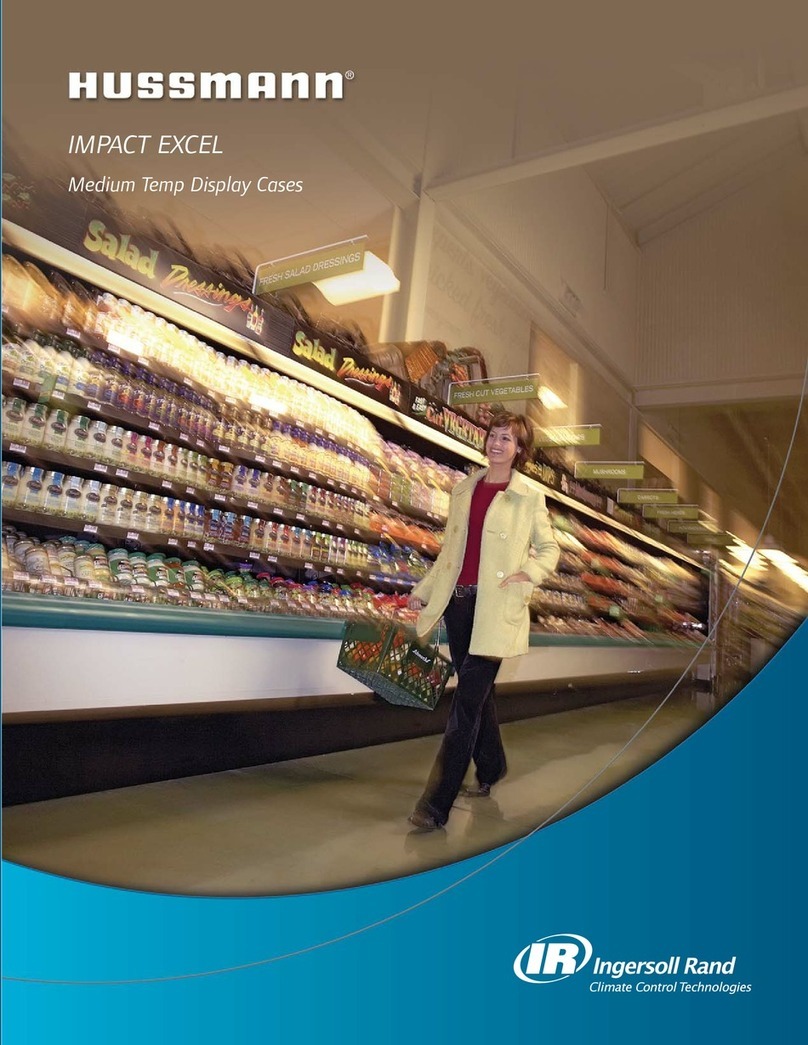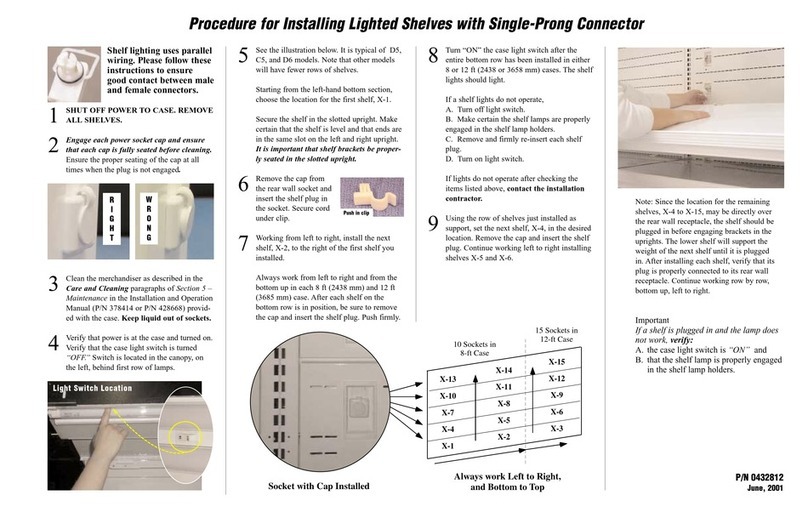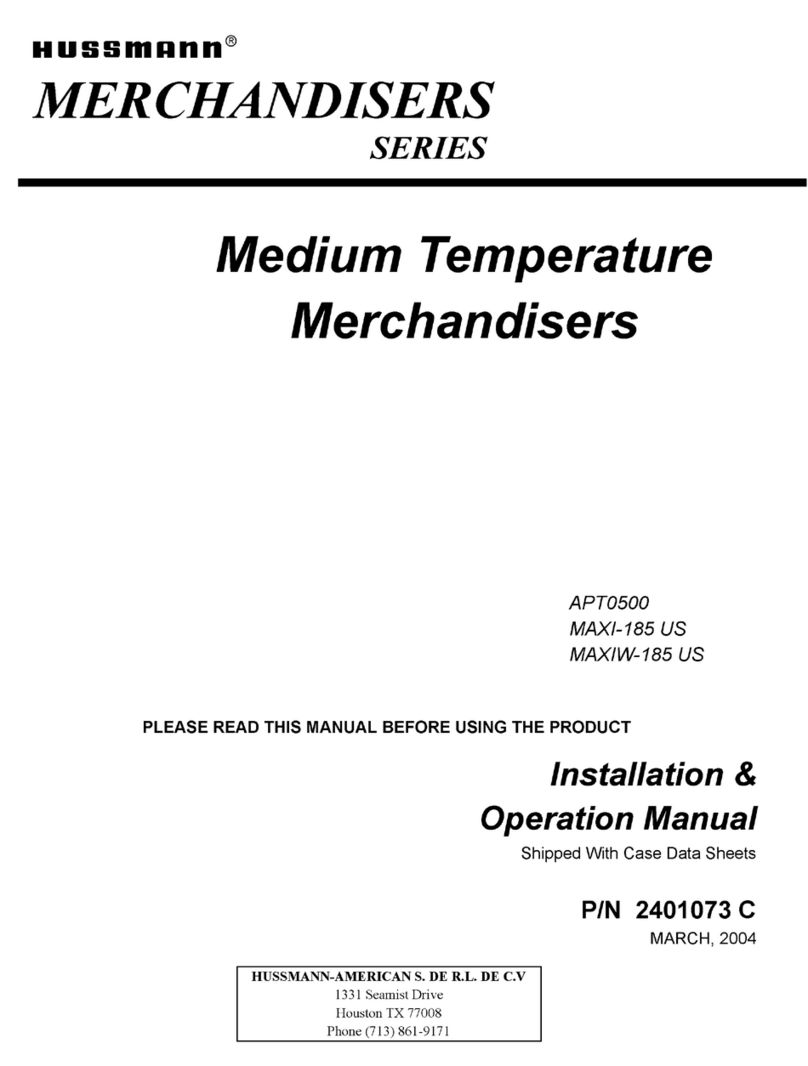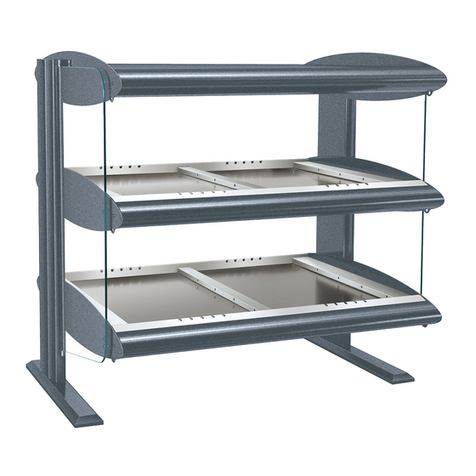
MAINTENANCE
The power switch must be turned to OFF and the unit disconnected
from the power source whenever performing service, maintenance
functions or cleaning the refrigerated area.
REFRIGERATORS AND FREEZERS
The interior and exterior can be cleaned using soap and warm water. If this isn’t sufcient, try ammonia
and water or a nonabrasive liquid cleaner. When cleaning the exterior, always rub with the “grain” of
the stainless steel to avoid marring the nish.
Do not use an abrasive cleaner because it will scratch the stainless steel and plastic and can damage
the breaker strips and gaskets.
CLEANING THE CONDENSER COIL
The condenser coil requires regular cleaning at least every 90 days. In some instances, you may nd
that there is a large amount of debris and dust or grease accumulated prior to the 90 day time frame.
In these cases the condenser coil should be cleaned every 30 days.
If the build up on the coil consists of only light dust and debris the condenser coil can be cleaned with
a simple brush, heavier dust build up may require a vacuum or even compressed air to blow through
the condenser coil.
If heavy grease is present, there are de-greasing agents available for refrigeration use and specically
for the condenser coils. The condenser coil may require a spray with the de-greasing agent and then
blown through with compressed air.
Failure to maintain a clean condenser coil can initially cause high temperatures and excessive run
times, continuous operation with dirty or clogged condenser coils can result in compressor failures.
Neglecting the condenser coil cleaning procedures will void any warranties associated with the
compressor or cost to replace the compressor.
.
o For efficient operation, keep the condenser surface free of dust, dirt, and lint.
o We recommend cleaning the condenser coil at least once per month.
o Clean the condenser with a commercial condenser coil cleaner and a soft brush, available from
any commercial refigerationequipment retailer, or vacuuming the condenser with a shop vac or
use CO2.
Never use a high pressure water wash for this cleaning procedure
as water can damage the electrical components located near or
at the condenser coil.
In order to maintain proper refrigeration performance, the condenser ns must be cleaned of
dust, dirt and grease regularly. It is recommended that this be done at least every three months. If
conditions are such that the condenser is totally blocked in three months, the frequency of cleaning
should be increased. Clean the condenser with a vacuum cleaner or stiff brush. If extremely dirty, a
commercially available condenser cleaner may be required.
STAINLESS STEEL CARE AND CLEANING
To prevent discoloration of rust on stainless steel, several important steps need to be taken. First, it is
important to understand the properties of stainless steel. Stainless steel contains 70-80% iron which will
rust. It also contains 12-30% chromium which forms an invisible passive lm over the steel’s surface
which acts as a shield against corrosion. As long as the protective layer is intact, the metal is still
stainless. If the lm is broken or contaminated, outside elements can begin to breakdown the steel
and begin to form rust of discoloration. Proper cleaning of stainless steel requires soft cloths or plastic
scouring pads
DANGER
DANGER
7

